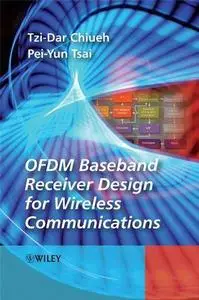OFDM Baseband Receiver Design for Wireless Communications By Tzi?Dar Chiueh, Pei?Yun Tsai(auth.)
2007 | 267 Pages | ISBN: 0470822341 | PDF | 8 MB
2007 | 267 Pages | ISBN: 0470822341 | PDF | 8 MB
Orthogonal frequency-division multiplexing (OFDM) access schemes are becoming more prevalent among cellular and wireless broadband systems, accelerating the need for smaller, more energy efficient receiver solutions. Up to now the majority of OFDM texts have dealt with signal processing aspects. To address the current gap in OFDM integrated circuit (IC) instruction, Chiueh and Tsai have produced this timely text on baseband design. OFDM Baseband Receiver Design for Wireless Communications covers the gamut of OFDM technology, from theories and algorithms to architectures and circuits. Chiueh and Tsai give a concise yet comprehensive look at digital communications fundamentals before explaining modulation and signal processing algorithms in OFDM receivers. Moreover, the authors give detailed treatment of hardware issues -- from design methodology to physical IC implementation. Closes the gap between OFDM theory and implementation Enables the reader to transfer communication receiver concepts into hardware design wireless receivers with acceptable implementation loss achieve low-power designs Contains numerous figures to illustrate techniques Features concrete design examples of MC-CDMA systems and cognitive radio applications Presents theoretical discussions that focus on concepts rather than mathematical derivation Provides a much-needed single source of material from numerous papers Based on course materials for a class in digital communication IC design, this book is ideal for advanced undergraduate or post-graduate students from either VLSI design or signal processing backgrounds. New and experienced engineers in industry working on algorithms or hardware for wireless communications devices will also find this book to be a key reference.Content: Chapter 1 Introduction (pages 1–8): Chapter 2 Digital Modulation (pages 9–29): Chapter 3 Multiple Access and Error?Correcting Codes (pages 31–57): Chapter 4 Signal Propagation and Channel Model (pages 59–84): Chapter 5 Synchronization (pages 85–114): Chapter 6 Channel Estimation and Equalization (pages 115–141): Chapter 7 MIMO Techniques (pages 143–170): Chapter 8 From Algorithm to Bit?True Design (pages 171–194): Chapter 9 Circuit Techniques (pages 195–232): Chapter 10 System Examples (pages 233–253):



